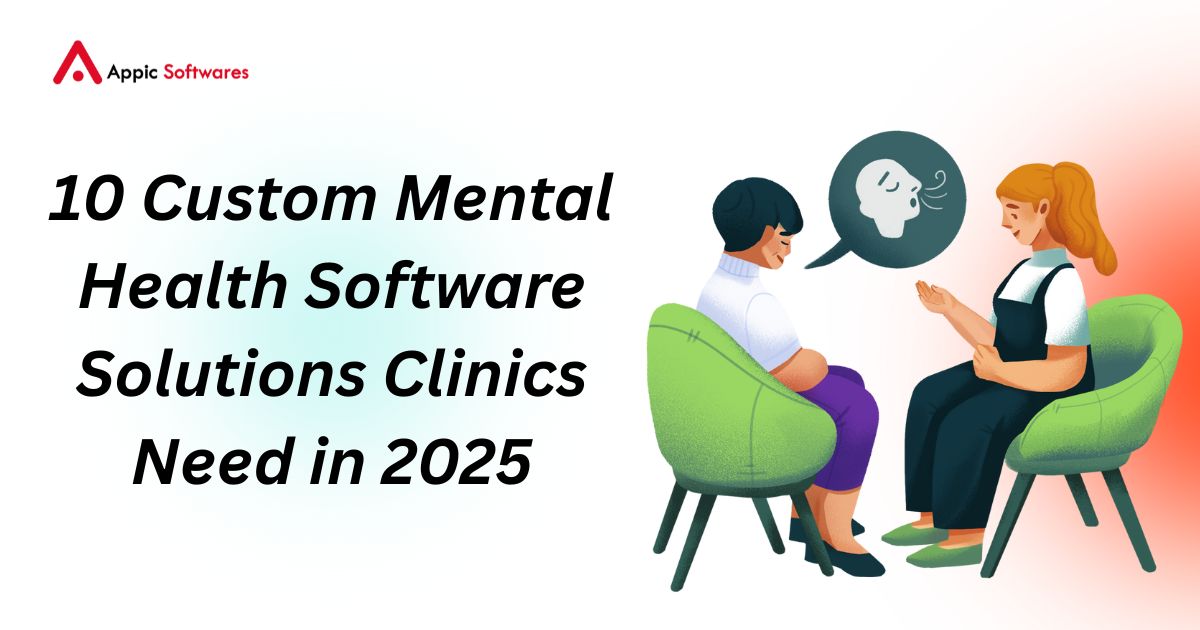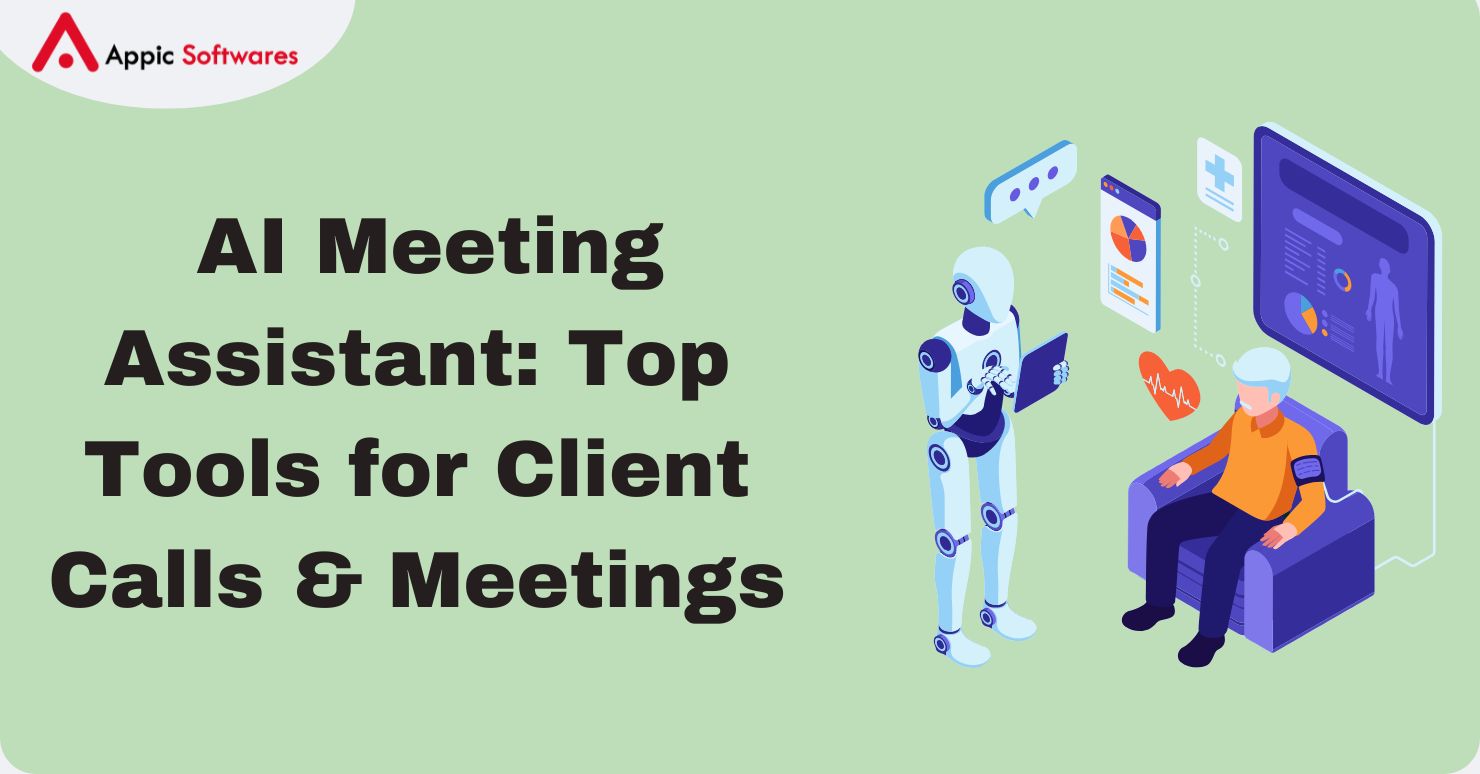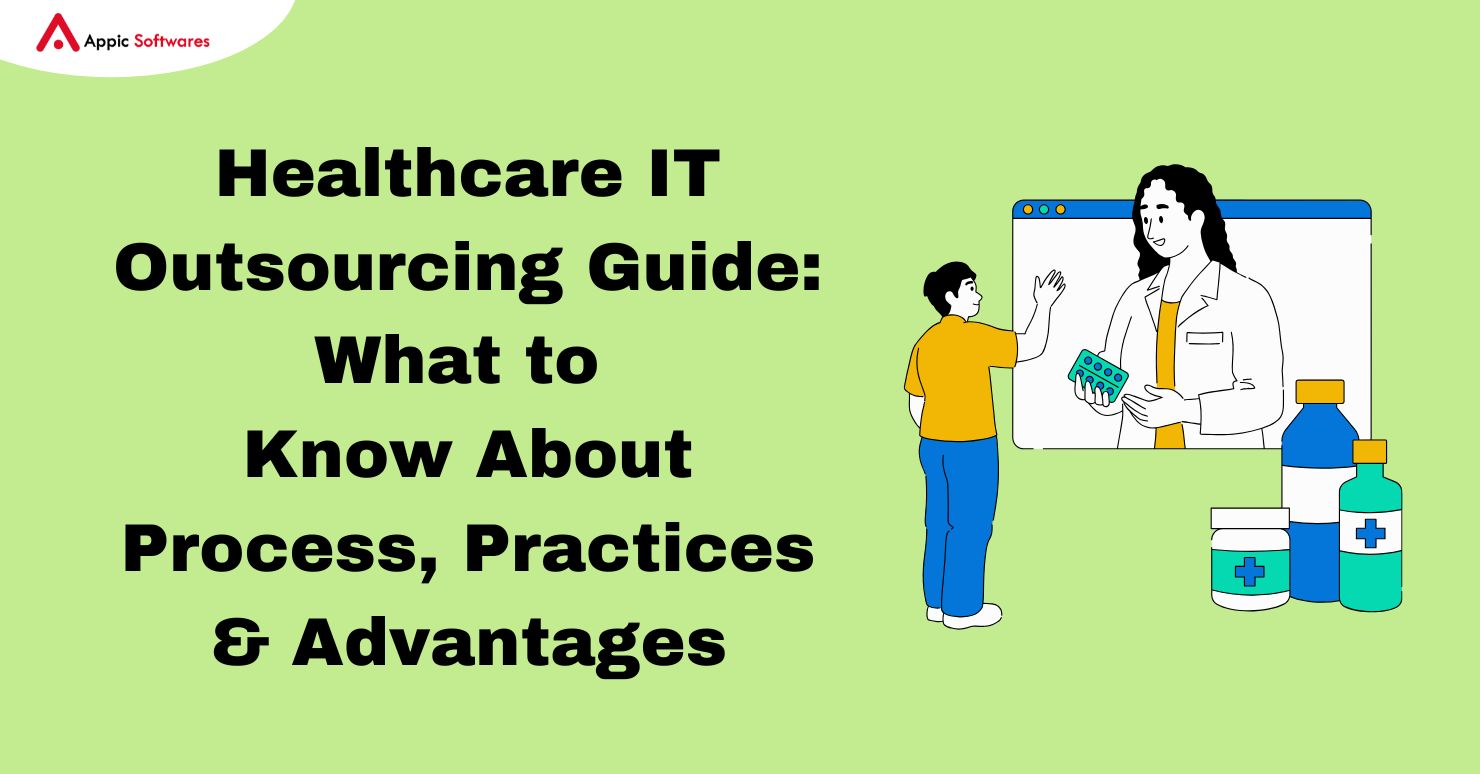
There is a big digital change happening in the healthcare industry. To better care for patients, streamline operations, and stay compliant with the law, hospitals, clinics, and doctors are using more advanced technologies. Software tools are becoming a necessary aspect of the healthcare ecosystem. They range from electronic health records to telemedicine platforms.
But for smaller healthcare companies, establishing, operating, and keeping these complicated systems in-house may be a scary and costly task. This is where outsourcing IT for healthcare comes in.
Healthcare providers might get rid of technological problems by outsourcing IT tasks to expert teams, such as a reliable mobile app development company that specializes in healthcare solutions. This lets internal staff focus on clinical outcomes while outside professionals take care of infrastructure, software, security, and new ideas. The end effect is that digital adoption happens faster, expenses go down, and service quality goes up.
In this detailed explanation, we’ll look at what healthcare IT outsourcing is, how it works, the different services it offers, and the many benefits it has. We’ll also talk about the problems, best practices, and how to pick the ideal outsourcing partner.
What Is Healthcare IT Outsourcing?
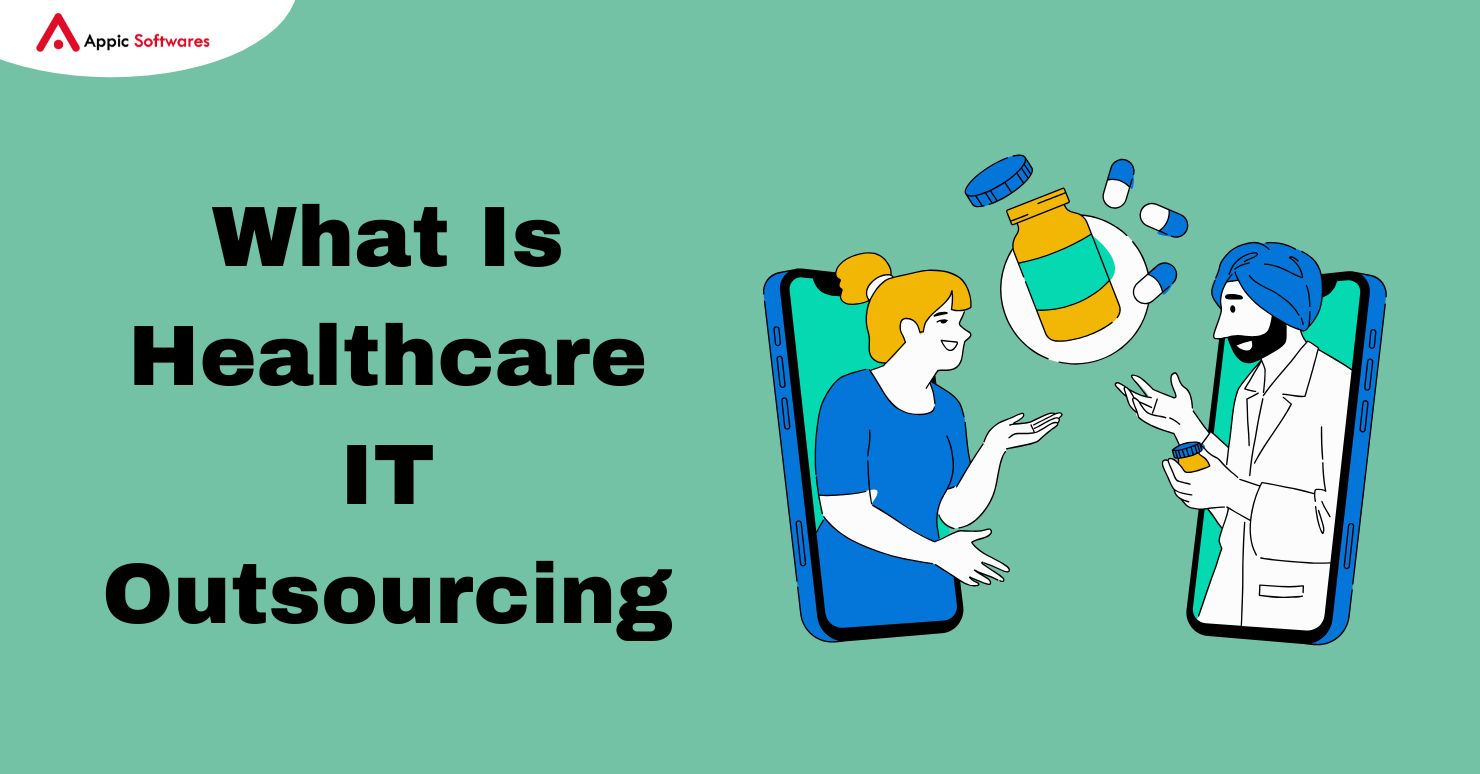
Healthcare IT outsourcing refers to the process of hiring external vendors, consultants, or development firms to handle information technology tasks that would otherwise be managed in-house.
These tasks can include a wide range of services such as:
- Developing custom healthcare software, including applications tailored for hospitals and clinics.
- Implementing EHR (Electronic Health Record) systems and integrating with goal based AI agents to enhance clinical decision-making.
- Managing cloud infrastructure, including secure backup solutions as discussed in server outage causes.
- Ensuring cybersecurity and preventing cyberattacks.
- Providing 24/7 technical support and addressing reasons why a server can crash.
- Integrating AI in healthcare for predictive insights and data analytics.
Rather than recruiting and training an entire internal IT department, healthcare organizations rely on outsourcing partners that already possess the technical and domain expertise needed.
Outsourcing gives access to a pool of highly skilled professionals, proven tools, and industry best practices—without the overhead of full-time hiring. It is also more scalable and flexible, which makes it suitable for both large hospital networks and small private clinics.
Why Healthcare Companies Are Outsourcing IT
Growing Need for Digital Healthcare Solutions
Today’s patients expect digital-first healthcare. From scheduling appointments online to accessing lab results via mobile apps and engaging in video consultations, digital services are now a standard part of the patient experience.
Healthcare providers must adopt modern IT systems to meet these evolving expectations. Delaying this transformation can result in poor patient satisfaction and lost opportunities. Outsourcing accelerates the adoption of these solutions by connecting providers with tech-savvy teams. Some providers are also experimenting with mHealth applications to extend care to mobile platforms.
Shortage of Skilled IT Professionals
The demand for IT professionals with knowledge of healthcare compliance and systems is high, but the supply is limited. Most healthcare institutions struggle to find and retain talent with specialized experience in both technology and medical workflows.
Outsourcing solves this gap by connecting healthcare organizations to pre-vetted professionals who understand the complexities of HIPAA, HL7, ICD-10, and other healthcare-specific frameworks.
For example, AI experts with experience in types of AI agents or developers who understand complex integrations.
Cost Optimization
Running a dedicated IT team internally involves significant expenses, including salaries, benefits, office space, tools, and continuous training. Outsourcing, on the other hand, converts these fixed costs into variable costs.
You only pay for the services you need, when you need them. This leaner model helps reduce operating costs without compromising performance or security.
If building predictive apps like stock market apps or analytics dashboards, outsourcing is cost-effective.
Faster Project Execution and Scalability
Time is critical in healthcare. Whether you’re rolling out a telemedicine platform or upgrading legacy systems, delays can lead to inefficiencies and patient dissatisfaction.
Outsourcing allows you to tap into ready-made teams that can begin work immediately. It also enables you to scale resources up or down depending on project requirements, allowing maximum agility. Leveraging teams experienced in AI in inventory management or Power BI integrations ensures timely delivery.
Types of Healthcare IT Services That Are Commonly Outsourced
1. EHR Implementation and Support
Electronic health records are the backbone of modern healthcare systems. They store, manage, and secure patient data. Outsourced vendors can assist with:
- Medical Billing and Coding Software: Some fintech-based features like those seen in SaaS fintech development are also integrated.
- Mobile App Development: Similar to building apps for HungerStation or Duolingo, healthcare apps must be fast and intuitive.
- Telemedicine Platforms: With video features paralleling video commerce platforms, vendors bring experience from other industries.
- Cybersecurity Services: Protect systems as you would in an ecommerce app.
- Cloud Infrastructure Management: Ensure reliability like in agriculture software, where uptime is vital.
Outsourcing ensures these systems are implemented efficiently and stay compliant with healthcare standards.
2. Medical Billing and Coding Software
Revenue cycle management is vital for a healthcare organization’s financial health. Errors in billing and coding lead to revenue leakage and claim denials.
Outsourced IT teams can build and manage billing platforms tailored to local regulations and healthcare provider needs, ensuring accuracy, automation, and compliance.
3. Mobile App Development
Healthcare apps are no longer optional—they are essential. Patients use them to track medications, set reminders, chat with doctors, and more.
Outsourcing app development allows healthcare providers to create feature-rich, secure, and user-friendly mobile solutions without investing heavily in internal development teams.
4. Telemedicine Platforms
The rise of remote consultations during the pandemic proved the value of virtual care. Outsourcing helps healthcare providers build custom telemedicine platforms that include:
-
Real-time video consultation
-
Chat and messaging
-
Appointment scheduling
-
EHR integration
-
Payment processing
These platforms offer convenience to patients while improving provider reach.
5. Cybersecurity Services
With the increasing number of cyberattacks targeting healthcare systems, cybersecurity has become non-negotiable. Outsourcing firms provide:
-
Regular vulnerability assessments
-
Firewall and antivirus management
-
Intrusion detection systems
-
Employee training
-
Regulatory compliance (e.g., HIPAA, GDPR)
These services protect patient data and ensure legal safety.
6. AI and Data Analytics
Healthcare data can be used for a variety of AI-driven insights—such as disease prediction, patient risk scoring, or operational optimization.
Outsourcing companies with AI expertise can help integrate machine learning and predictive analytics tools into existing systems without heavy investment in internal R&D.
7. Cloud Infrastructure Management
More healthcare organizations are moving their data and applications to the cloud to gain better accessibility, scalability, and disaster recovery.
Outsourced providers manage the full cloud lifecycle—from migration and setup to performance monitoring and optimization.
The Process of Healthcare IT Outsourcing
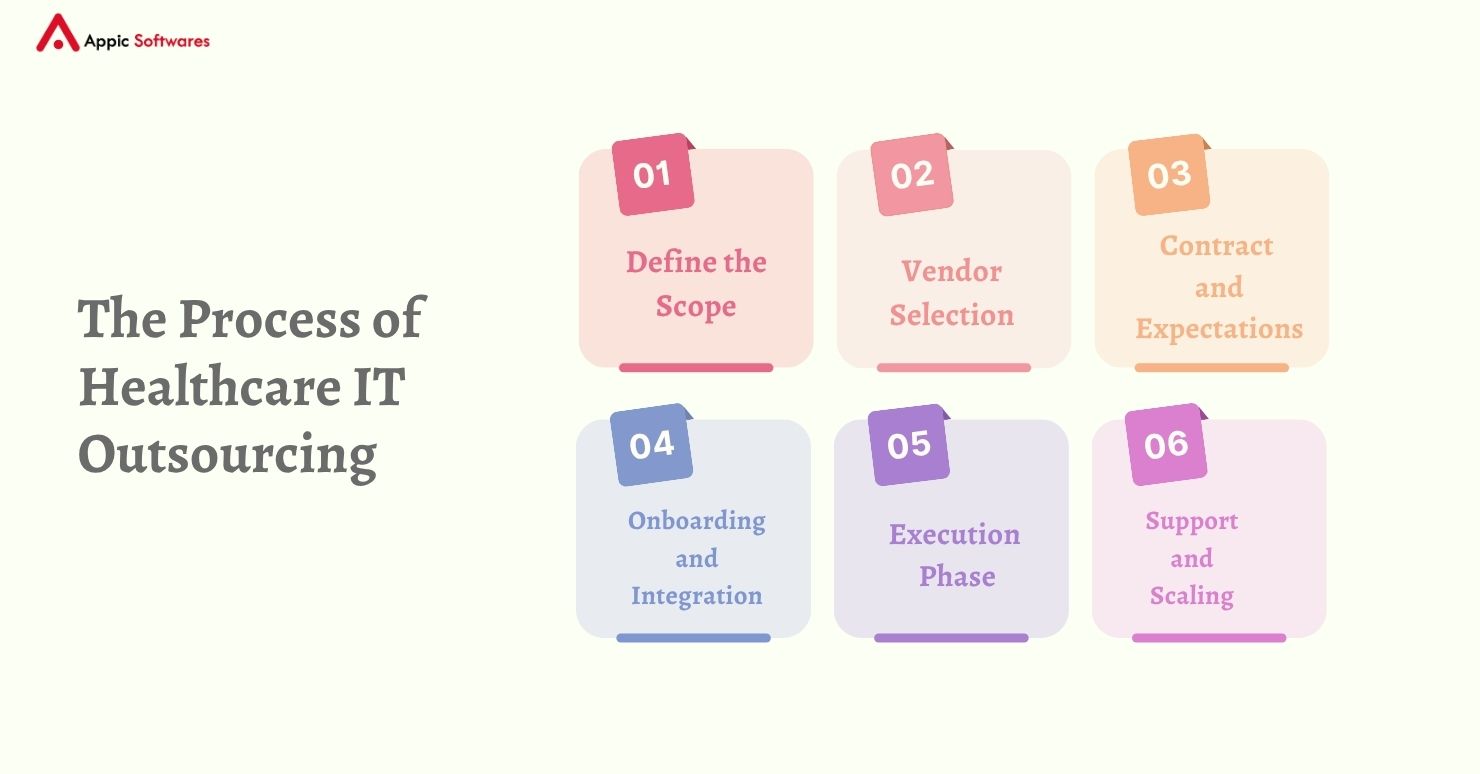
Define the Scope
You have to efine whether you’re building a system from scratch or integrating advanced features like those seen in restaurant app development or real estate heatmaps.
Healthcare organizations need to understand what specific IT services they are looking to outsource. This could range from the development of a complete electronic health records (EHR) system, ongoing software maintenance, mobile health app development, or even cybersecurity monitoring. A clearly outlined scope allows healthcare companies to identify the right service providers and ensures that project execution proceeds efficiently without confusion or delays.
Defining the scope also involves assessing internal capabilities and identifying which parts of the IT infrastructure require external support. For example, some healthcare institutions may have in-house developers but may need external vendors to handle data security or regulatory compliance. Ultimately, a detailed scope lays the foundation for a successful outsourcing journey.
Vendor Selection
Once the scope is clearly established, the next crucial step is selecting the right outsourcing vendor. Check if your vendor understands platforms like Auth0 with Next.js for secure access control.
In the healthcare sector, it’s essential to partner with vendors who have proven experience in developing and managing healthcare solutions. Vendors must be evaluated based on their past performance, existing client portfolio, technical proficiency, and understanding of the healthcare domain.
Certifications such as ISO 27001, HITRUST, or SOC 2 can serve as proof of their commitment to data security and compliance. Equally important is the vendor’s ability to understand and navigate healthcare-specific regulations, such as HIPAA in the US or GDPR in the EU. A competent vendor should also be capable of integrating with legacy healthcare systems and third-party platforms without compromising data integrity or system performance.
Contract and Expectations
After selecting a suitable vendor, the next step is to clearly define the contractual obligations and set mutual expectations. This is typically formalized through a Service Level Agreement (SLA), which acts as the legal backbone of the outsourcing engagement. The SLA should outline what deliverables the vendor is responsible for, timelines for development or maintenance phases, payment terms, and any specific milestones. Outline SLAs similar to contracts used in high-compliance sectors like fintech app development or astrology app creation.
Moreover, it should define terms for post-deployment support, uptime guarantees, change requests, and penalties for non-performance. Confidentiality agreements are vital when dealing with sensitive patient data and must be emphasized within the contract. The contract should also include a section on regulatory compliance to ensure that all outsourced services align with healthcare standards and laws.
Onboarding and Integration
Once the contract is signed, the onboarding phase begins. This stage focuses on bringing the outsourcing team up to speed with the healthcare organization’s internal processes, existing technologies, and specific project goals. Smooth onboarding is critical to avoid miscommunication or delays down the line.
During this stage, access to documentation, codebases, APIs, and point-of-contact staff should be provided. Clear roles and responsibilities must be defined, and regular communication channels such as Slack, Teams, or email should be established. Setting up weekly or bi-weekly check-ins allows both teams to stay aligned throughout the project lifecycle. This ensures seamless integration between in-house operations and outsourced tasks.
Execution Phase
With the vendor onboarded, the execution phase begins. This is where the actual work—be it development, maintenance, or testing—gets underway. Healthcare organizations must ensure that the outsourced team adheres to agile development methodologies and regularly reports progress. Real-time project management tools like Jira, Trello, or Asana can help track milestones and identify any blockers early in the process.
It is also crucial to implement a collaborative approach, where issues are addressed jointly and improvements are continuously made. Frequent testing, both manual and automated, should be conducted to ensure system reliability and regulatory compliance. Maintaining transparency and frequent status updates builds trust and helps avoid misunderstandings.
Support and Scaling
Once the product or service is live, the relationship with the outsourcing partner does not end. Ongoing support is essential for managing updates, handling user feedback, patching vulnerabilities, and scaling the system based on user load or organizational growth. An effective outsourcing partner will provide 24/7 monitoring, customer support, and security management to ensure the application performs optimally.
As healthcare needs evolve, the outsourcing vendor should be flexible enough to scale resources, integrate new features, and support cloud migration or system expansion if needed. This stage plays a significant role in the long-term success of the outsourcing initiative and reinforces the importance of having a reliable and scalable partner.
Best Practices for Successful Healthcare IT Outsourcing
Partner with Healthcare-Specific Vendors
Outsourcing healthcare IT services to generic IT companies can be risky due to the complex nature of healthcare workflows and strict compliance requirements. Working with vendors who specialize in healthcare ensures that the team is already familiar with medical terminologies, patient data handling procedures, and relevant regulations. These vendors are also better equipped to understand the user needs of clinicians, nurses, and patients.
Maintain Transparent Communication
Clear and open communication is the backbone of any successful outsourcing arrangement. It’s important to maintain regular check-ins, video meetings, and status updates throughout the project. Healthcare teams should encourage the outsourcing vendor to share documentation, test results, and feedback reports. Having a transparent dialogue ensures that issues are quickly resolved and objectives remain aligned.
Prioritize Security
Given the sensitivity of healthcare data, security must always remain a top priority. Healthcare organizations should demand strong encryption protocols, access control policies, and secure data storage practices from their outsourcing partners. Ensuring compliance with regulations like HIPAA, GDPR, and HITECH is non-negotiable. Regular audits, penetration testing, and vulnerability assessments should be carried out to safeguard patient records and system integrity.
Set Clear KPIs
Setting measurable KPIs (Key Performance Indicators) helps evaluate the performance of the outsourcing vendor. Metrics such as bug resolution time, system uptime, development speed, and end-user satisfaction provide valuable insight into the effectiveness of the partnership. These KPIs also serve as benchmarks during performance reviews and SLA evaluations.
Think Long-Term
Successful healthcare IT outsourcing isn’t just about short-term deliverables. It should be viewed as a long-term strategic partnership. Vendors who stay with you over the long haul understand your organization better, streamline operations, and deliver increasingly optimized solutions. Building a relationship with a vendor that evolves along with your business brings consistent and measurable value over time.
Advantages of Healthcare IT Outsourcing
Cost Efficiency
One of the most cited benefits of healthcare IT outsourcing is the potential for significant cost savings. By outsourcing, organizations avoid the overhead costs associated with hiring, training, and retaining full-time IT staff. There’s also no need for expensive infrastructure, software licenses, or on-premises hardware. Healthcare institutions only pay for the services they use, which makes budgeting more predictable and manageable.
Access to Expert Talent
Outsourcing opens the door to a global pool of skilled professionals with experience in healthcare IT. From developers and designers to cybersecurity experts and compliance officers, these professionals bring specialized expertise that may not be available in-house. This ensures faster problem resolution and access to the latest technologies and best practices.
Faster Product Launches
Speed to market is often crucial in healthcare, especially for time-sensitive applications like telehealth platforms or patient portals. Outsourcing partners can quickly assemble teams and leverage established development workflows to accelerate the time-to-market. This competitive advantage can make a significant difference in patient outcomes and business success.
Scalability and Flexibility
Healthcare needs can change rapidly due to seasonal demands, regulatory updates, or organizational growth. Outsourcing allows organizations to quickly scale up or down based on real-time requirements without the burden of long-term commitments. This flexibility is especially useful when launching pilot projects or expanding to new locations.
Focus on Core Activities
By outsourcing non-core IT functions, healthcare teams can focus more on clinical services, patient care, and strategic decision-making. This division of labor improves overall productivity, enhances service quality, and ensures that technical operations don’t distract from the core mission of delivering healthcare.
Risks and Challenges in Healthcare IT Outsourcing
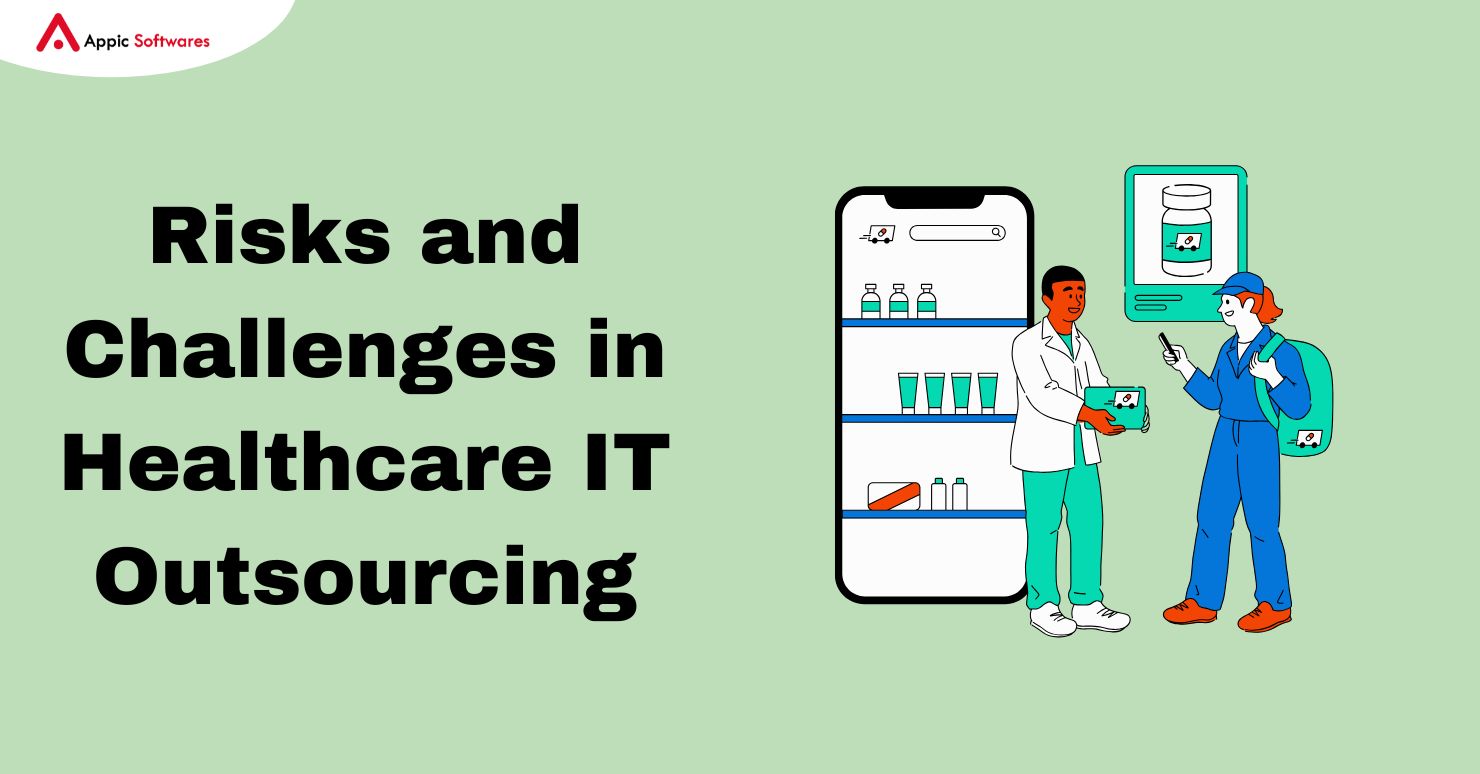
Data Security Risks
Healthcare data is highly sensitive and prone to cyberattacks. A data breach could result in legal penalties, financial losses, and damage to a healthcare organization’s reputation. It’s crucial to work with vendors that prioritize data protection and have a proven track record of securing sensitive information. Choosing a partner that specializes in healthcare software development significantly reduces such risks.
Communication Barriers
Outsourcing partners often operate in different time zones and may speak different languages. These differences can lead to miscommunication and delays if not properly managed. Establishing shared communication platforms, clear reporting structures, and well-documented processes helps mitigate these risks.
Quality Control
Not all outsourcing vendors deliver the same level of quality. To avoid disappointments, healthcare companies should start with a small pilot project to evaluate the vendor’s performance. This allows for early assessment of technical skills, responsiveness, and overall compatibility with your team.
Hidden Costs
Sometimes, the initial contract may not account for all the services required, leading to unexpected costs later. These could include charges for bug fixes, software upgrades, or extended support. To avoid surprises, request a detailed cost breakdown upfront and make sure all potential expenses are clearly defined in the contract. It’s important to understand the overall cost to create an app to avoid budget overruns.
Dependency on Vendor
Relying heavily on a single vendor can create a dependency that’s hard to break. If the vendor changes their pricing, discontinues services, or reduces service quality, it could significantly impact your operations. Healthcare organizations should retain control over code, documentation, and system architecture to ensure business continuity.
How to Choose the R
best online pharmacy with fast delivery purchase zofran online with the lowest prices today in the USA
ight Outsourcing Partner
Healthcare-Specific Expertise
The ideal outsourcing partner should have extensive experience working in the
healthcare domain. Review their case studies, client testimonials, and specific solutions developed for hospitals, clinics, or healthtech companies. Their ability to design domain-specific solutions like those seen in pet care app development also shows their understanding of health-oriented services.
Compliance and Security Capabilities
Choose vendors who are proficient in meeting compliance standards such as HIPAA, HITECH, and GDPR. They should also provide end-to-end encryption, secure hosting environments, and regular audit reports.
Transparent Communication
Your outsourcing partner should demonstrate a commitment to transparency and open dialogue. They should be willing to schedule regular sync-ups, provide detailed reports, and actively seek your feedback during each project phase.
Flexible Engagement Models
A good vendor offers flexibility in how they engage with clients. Whether it’s time-and-materials, fixed-cost, or dedicated team models, they should be willing to adapt their approach to meet your budget and timeline needs. Understanding how multi agent systems work can help ensure smooth collaboration within distributed teams.
Post-Deployment Support
Support does not end after launch. Ensure your vendor offers reliable post-deployment services, including system maintenance, bug fixing, and feature upgrades, so you’re not left stranded when things go wrong.
Conclusion
Healthcare IT outsourcing is no longer a tactical decision; it’s a strategic move to enhance digital transformation, improve service delivery, and reduce operational costs. When done right, outsourcing becomes a partnership that empowers healthcare providers to focus on what they do best, delivering quality patient care.
By selecting a vendor with healthcare expertise, strong compliance practices, and a long-term vision, organizations can unlock faster innovation, higher security, and scalable IT solutions. As the healthcare industry continues to embrace digital transformation, outsourcing remains a reliable and powerful pathway toward achieving operational excellence and better patient outcomes.
FAQs
1. Which healthcare IT services are best for outsourcing?
Healthcare companies commonly hire outside companies to do things like set up Electronic Health Records (EHR), make mobile apps, handle medical billing and coding, manage cloud infrastructure, keep data safe, and analyze data with AI. These areas are easier to grow with outside partners and benefit from specialized knowledge.
2. Is it safe and HIPAA-compliant to outsource healthcare IT?
Yes, but only if you work with the proper vendor. Good outsourcing companies follow rigorous security rules, offer services that comply with HIPAA, and have frequent audits to make sure patient data is kept private. When picking a vendor, always check their HITRUST, ISO 27001, or SOC 2 certifications.
3. How do I pick the best partner for healthcare IT outsourcing?
Find a partner who has a lot of experience with healthcare technology, is good at following the rules, is open about how they communicate, and is willing to work with you in different ways. Also, think about how well they can give long-term assistance and connect with your current systems in a safe and effective way.






